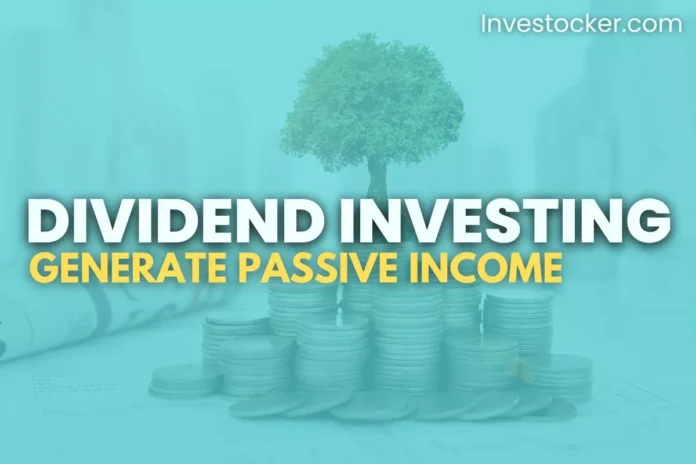Are you missing out on one of the most powerful investing strategies for Passive Income? There is investing that not everyone does but can significantly impact your future financial growth. While Passive Income is a term that sounds pretty sketchy, this Investing Strategy delivers.
And when you’re stuck working a 9 to 5 job, grinding each day, and feeling like you are making zero progress towards financial independence, it can be frustrating. I get it. I’ve been there. And do you want to know what helped me get out of it? The answer is “Power of Dividend Investing!”
Today, I will share the essential steps to creating an effective Dividend-Earning Passive Income Portfolio.
Also Read: 8 Investment Mistakes Beginners Should Avoid in Stock Market
Basics Of Dividend Investing
One way to look at Passive Income From Dividend Investing is this: if you’re a breeder of rare dogs, you could sell your dogs and make some good money immediately. But now your dogs are gone, and you are empty-handed. But if you had kept some of your dogs so that you could keep producing puppies, then you’re creating a way to generate consistent long-term income. Rather than going for a quick buck by selling off your assets, you are building a way to continue making money in the future.
Likewise, investing in Dividends probably won’t make you rich overnight. It’s a long-term strategy. Companies pay dividends, even if their value doesn’t increase over time. You still have a reliable cash-generating asset that can keep paying for many years. With these dividends, we can slowly add to our portfolio.
Basics Of Dividend Yield
Be careful with the yield, which is your return on investment. It can estimate how much a business will give back to its shareholders. Still, it doesn’t necessarily equate to the health of a company. Company value and dividend yield are not always directly related to each other. How about we take a look at an example?
Also Read: 10 Best Money-Saving Hacks (How to Save Money?)
Example Of Dividend Yield
If we look at “Apple” stock, which has a yield of 1.46% right now, we can be confident that your dividend payments will stay consistent over time.
It isn’t a vast number, and if your focus is on making money with dividends, then you might make the mistake of thinking. It would be best if you only looked for businesses with the highest dividends. But that is a bad strategy.
In 2018, DDR Corp (SITE Centers) had a high dividend yield of over 10%. It seems like a sure winner, but in actuality, they were overrun with debt, and they had been experiencing a sharp decline in the stock price over the previous two years. If you only look at the yield, you might be tempted to buy. Still, the loss you experience in share value would make the dividend yield essentially worthless. It is an excellent example of something called a “Dividend Trap.”
How To Avoid Dividend Traps?
Research and due diligence are crucial, and you should do them before buying any investing vehicle. Checking to see if the dividend keeps going up is another good way to figure out how your return on cost will change over time.
Also Read: How To Develop Investing Mindset For Teenagers?
Basics Of Payout Ratio
The payout ratio shows how much of a company’s profit is given out as dividends so that the company can grow. It should put some money into growth, development, and research. If it pays out too much in dividends, it might not have enough money to grow the business in the future. If profits go down in the future, a company with a high payout ratio might not be able to keep paying dividends on time.
Price-Earning Ratio (PE Ratio)
The Price-Earnings ratio, also known as the “P&E Ratio,” is a company’s share price ratio. (“P” – to their earnings per share). (“E” is used to value companies and determine whether they are overvalued or undervalued). You can use a company’s “PE Ratio” to determine a stock’s market value and future growth. If earnings are expected to go up, their dividends are usually expected to rise too. Higher earnings and rising dividends typically lead to a higher stock price.
Also Read: 7 Steps To Become Wealthy with Modest Salary (2022)
5 Important Dividend Payout Dates
Of course, you probably want to know when you will get paid your dividends. Here are five important dates to keep in mind:
- The Trade Date is the date or the day you put in your order to buy or sell shares.
- The settlement date is the actual date of the exchange.
- The ex-dividend date is the first day a stock trades without a dividend. You can get a dividend payment if you buy your shares on or before the ex-dividend date. Otherwise, you won’t get paid until the next time the dividend cycle comes around.
- The record date is when the company will decide if it will pay out the dividend or not.
- And last but not least, everyone’s favorite, the Pay Date! It is when you get paid!
Things To Keep In Mind To Make Money From Dividends
Here’s the thing: remember that slow and steady wins the race if you want to make money from stocks that pay dividends.
It would be best if you had discipline and patience for a dividend growth investment strategy to work. It’s not a thrill ride, but it gets the job done.
Dividend investing can be a great addition to your portfolio for its potential long-term passive income benefits.
Also Read: Guide To Investing in Dividend Stocks For Passive Income
Last Words
And this introduction is just the tip of the iceberg. If you want to go even deeper, the next step is to check out another article on Dividends, where I provide a dividend investing guide to help you level up.


